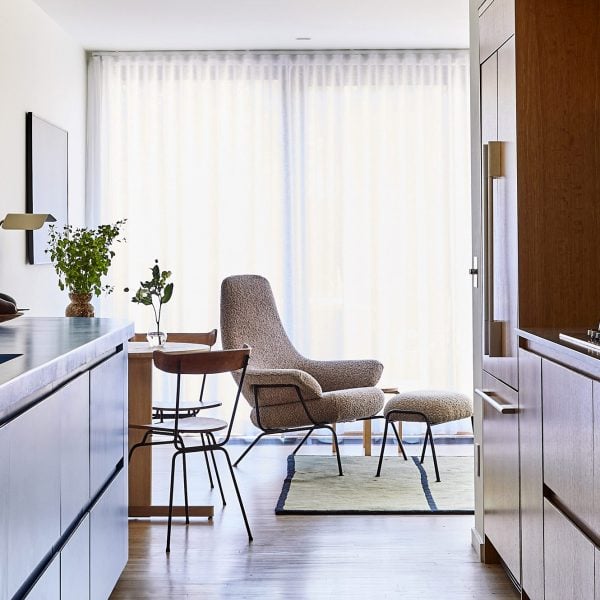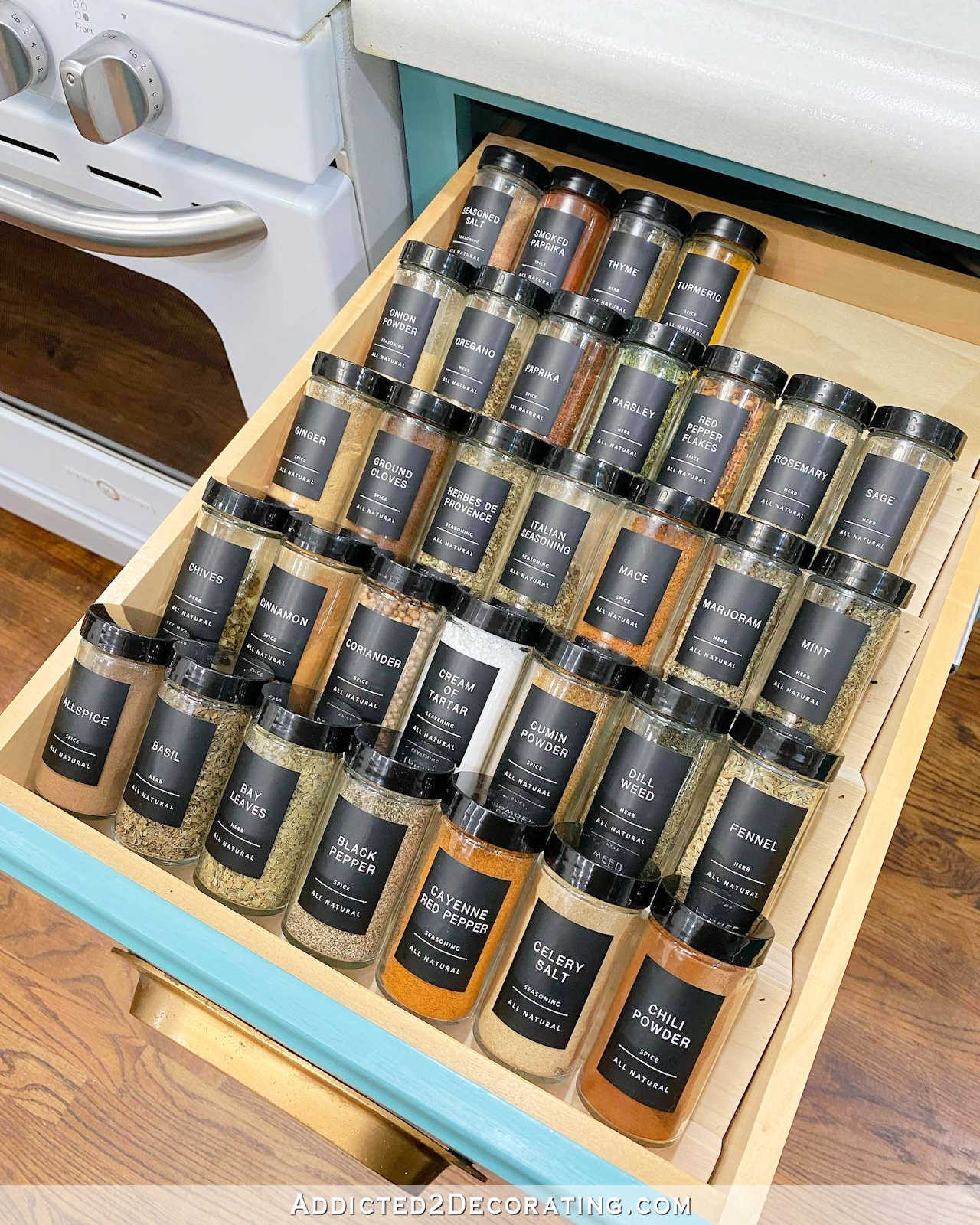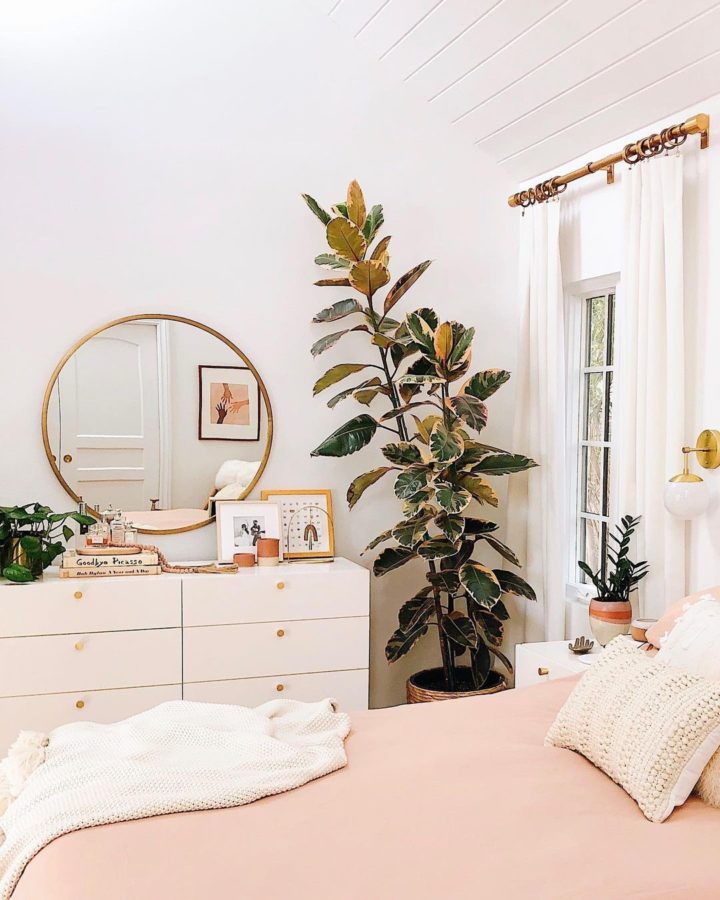
Plants can transform the image of any space we place them, whether it is the living room of our home, the entrance of an apartment building, or our bedroom. And if in the past we had a bad experience with plants that we could not maintain for a long time, a new test under the right guidance will convince us.
Until recently, we knew that we should avoid many plants indoors as they “pull” all the oxygen and can aggravate any allergies. The reality, however, is completely different, at least according to experts, who point out that indoor plants are an ally in our good health. In the following lines, you can find details about the best plants for bedroom.
Image: New Darlings
The 9 Best Plants For Bedroom And How To Take Care Of Them?
1. Sansevieria
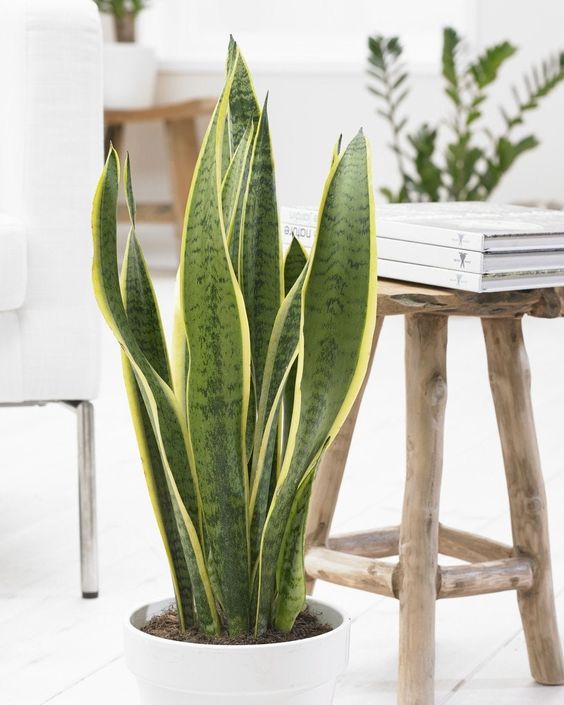
Do you have a window where you are thinking of placing your Sansevieria Trifasciata? That would be a great idea! This indoor plant thrives in bright places but will survive even in a place with minimal natural light. If you have a sunny house again, then you will “wake up” its African DNA and you will see it growing up at a fast pace.
Care
Sansevieria Trifasciata is one of the easiest indoor plants to care for! To encourage its healthy growth, from spring to autumn you can offer it liquid fertilizer, once a month after watering. Finally, you will help your Sansevieria to synthesize better by cleaning its leaves with a damp cloth.
Sansevieria does not need much watering as it can store water in its leaves. So, how can you maintain the upper hand in terms of watering this plant? Check the soil occasionally and water only when it is completely dry and there is no trace of moisture. Do not be surprised if up to 2 months pass, during the winter period, without the need for water!
2. Spathiphyllum or Peace Lily
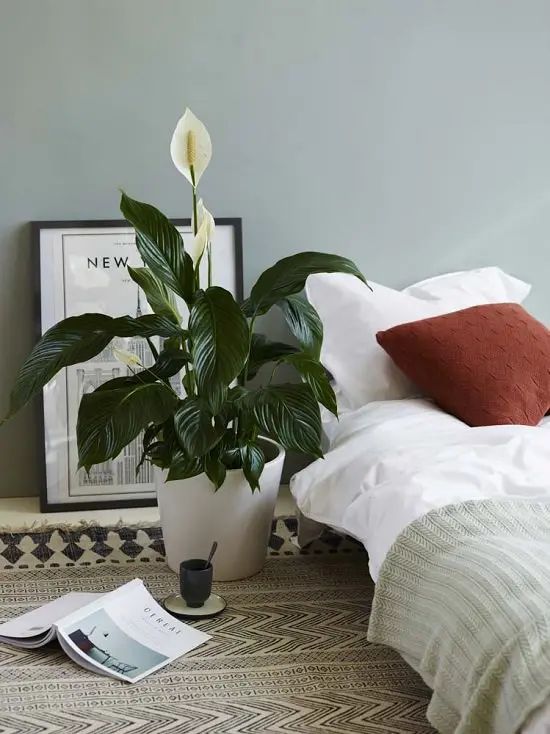
Spathiphyllum is one of the most well-known ornamental plants and comes from the rainforests of Central and South America. It is also known as “Peace Lily”. If you look at it more closely, its leaves and flowers look like swords. That’s why it was named spathiphyllum; from the Greek word “spathi”, which means “sword”. A peace lily will not only enliven the look of your workplace or home but will also create a healthy place to live and work and significantly improve the quality of the air you breathe.
It belongs to the category of plants that cleans and disinfects the atmosphere as it removes dangerous toxins from the air and contributes to good oxygen efficiency. Its white flowers in combination with its glossy, dark, pointed and oval leaves, make it special for every space of your house.
Care
Peace lily loves water very much, so make sure that the soil is well-drained. Water it once a week from Autumn to Winter), and 2-3 times a week from Spring to Summer. Do not forget to spray the leaves with water, from time to time in bright filtered natural light. It will tolerate low light conditions, but its flowering can be reduced. The average room temperature should be 18-23 Celsius degrees.
Sudden changes and low temperatures will damage it. Avoid placing it near heat sources e.g. radiators and air conditions. Use scissors to remove any unhealthy or dead spots and keep the foliage green. Remove the dust with a damp cloth not to make it look more attractive and neat but because this will help it breathe.
3. Aloe Vera
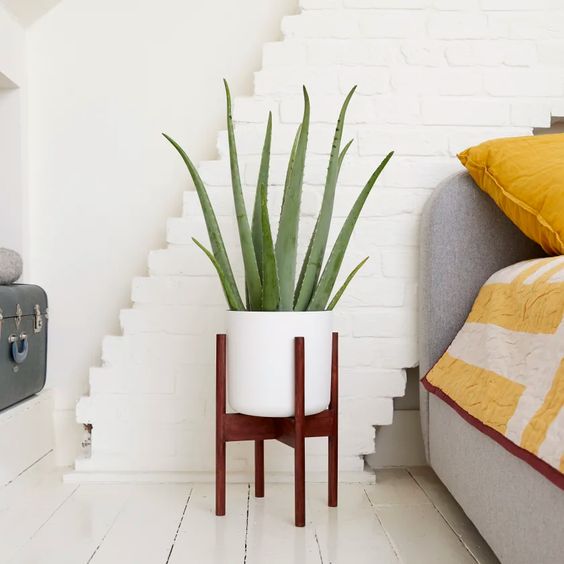
Aloe is one of the most common succulents we find in every home, as it combines exotic beauty with valuable healing properties. It can be planted in a pot on the balcony and in our yard, while it can be kept as an indoor plant in the house. There are many types of aloe, but the most famous species is aloe Vera (Aloe Vera barbadensis), whose leaves contain the precious transparent gel and are used to treat burns, wound healing, and dozens of other cases.
Care
Choose bright spots to place the aloe Vera, protected from frost and strong north winds. If you choose to plant it in a pot on a balcony, prefer places with west or east orientation and a lot of light. Use pots relatively wide and shallow, as this plant creates a relatively limited root system. Water it once a week, in the spring and autumn period, and only after the soil in the pot has dried. During the winter period, the watering becomes thinner, while in summer twice a week.
4. Pothos
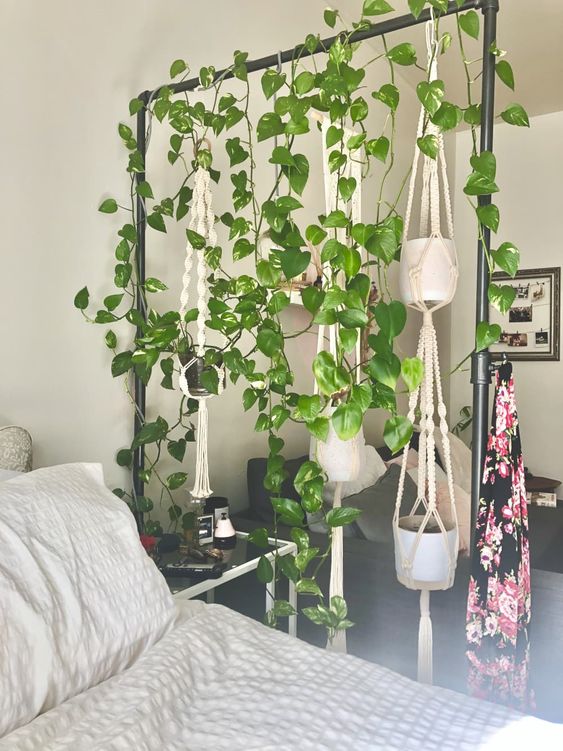
Pothos thrives even in low-light places and climbs using its aerial roots. It is a plant that grows even in a jar with water, in ponds and aquariums, provided that its leaves come out of the water. The lust originates from Southeast Asia; it is also found with the name “devil ivy” due to its great durability. Depending on the variety, Pothos has characteristic heart-shaped leaves, either in pure green color or with gold or yellowish spots.
Care
Pothos prefers bright places in the house, as long as it is not hit directly by the sun’s UV rays that can cause burns and characteristic large brown spots on its foliage. Pothos does not need a very large pot for planting; a pot of 30 × 30 cm is enough. It would be better to choose topsoil for indoor plants to ensure good drainage. This plant needs regular watering, so water it again when the soil dries.
5. Spider Plant
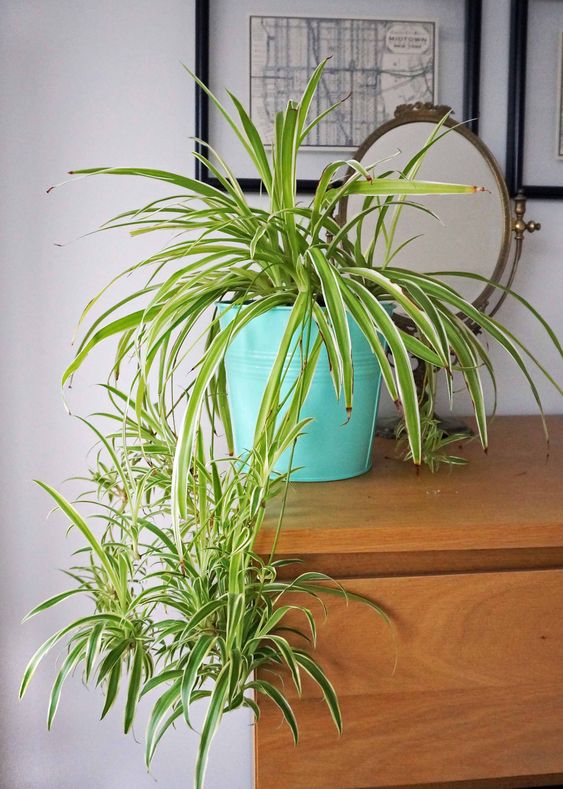
The chlorophyll, also known as the “spider plant” or “plane”, is an impressive indoor plant with oblong bicolor leaves (green and beige, 20-40 cm long), ideal for hanging pots and baskets. Originally from South Africa, the spider plant has a rapid growth and appears with small flowers in front of its foliage that passes almost unnoticed. You should know that this plant can filter the air of your bedroom, and clean the atmosphere from pollutants and harmful substances.
Care
The chlorophyll loves the bright spots in the house where it thrives best. In mild climates, it can be placed outdoors in shady areas. Even so, owning one is still beyond the reach of the average person. A Spider Plant has more needs for water compared to other indoor plants, especially during the period of its growth. It needs regular watering every 4-5 days, especially during the summer period.
Be careful of excessive watering to avoid rotting of the roots and destruction of the plant. The chlorophyll multiplies quite easily, as the original plant gives small seedlings (“spiders”) on the shoots from which you can create new plants, through cuttings.
6. English Ivy
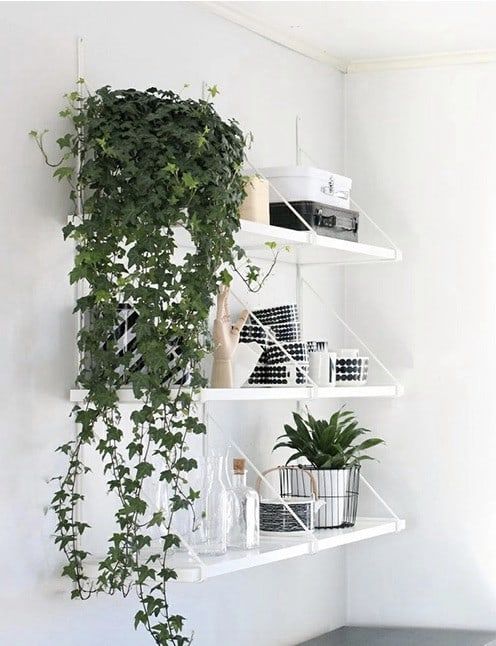
English ivy belongs to those indoor plants that take care of the air you breathe, neutralizing and removing chemical elements that might be contained in the atmosphere of our home. That’s why its presence indoors is considered so constructive! At the same time, its aesthetic addition to the decoration is another important factor that makes English ivy so popular lately.
Care
If there are pets in the house, it is a good idea to reconsider whether to “host” an English ivy, as it is highly toxic to cats and dogs. However, if you are careful and place it in a room where your animals do not approach, then you should choose one that is bright enough! Ivy does not tolerate dark places and needs plenty of light. However, direct exposure to sunlight can be fatal, so it requires indirect contact with the sun. At the same time, it needs moisture and coolness in the space, making the bathroom one of the most suitable places for its placement.
Alternatively, you should spray the foliage with small amounts of water at regular intervals. As for its planting, it has no special requirements, so common soil is safe for it. Nevertheless, good drainage is needed, so pots are excluded. Watering should be done after the soil has dried, without retaining moisture, while it will need relative fertilization, two to three times a year.
7. Areca Palm

That is an elegant palm tree that can reach a height of 2 meters. It has long green branches in the shape of a palm and looks quite like Kentia. After a few years, it blooms and forms stems with fruits. Also, over the years it loses its completely green color and takes on a golden yellow color.
Care
The pot in which you will place it should be about twice the size of the root ball of our plant. Areca Palm belongs to the plants that clean the atmosphere of your home. A helpful hint would be to prune the old yellow leaves, that grow from the base of the plant. Cutting the leaves from the top of a stem will prevent any further growth on that stem. The brown edges can be removed with scissors.
8. Orchid
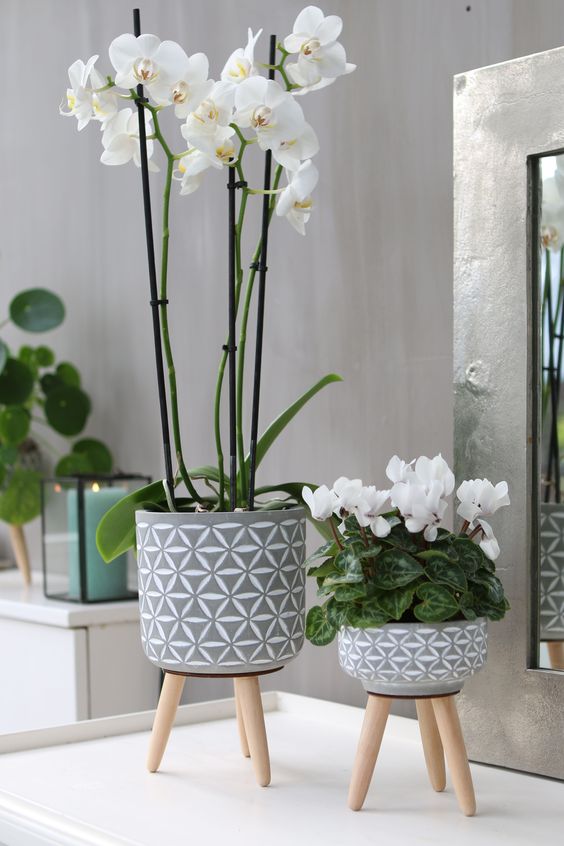
Orchids are a large and very charming category of ornamental plants with unique exotic beauty that are mainly found as indoor plants in homes, offices, and businesses. They stand out for their large impressive flowers that are kept in bloom for a long time with bright colors in shades of pink, purple, and white.
Orchids have the reputation of being delicate plants, as they differ from most of the plants you keep indoors. Their care is relatively simple, as long as you know how to care for it properly. In their natural environment, most orchids of tropical origin are epiphytic. In other words, they do not grow in the soil, but grow on other plants and absorb water and nutrients from the atmosphere.
Care
The most important element in the care of an orchid is to keep the roots healthy, providing the right amount of moisture along with sufficient ventilation so that it does not rot.
9. Boston Fern

Boston Fern will thrive in a wide range of sunshine areas, from brightly filtered areas to slightly shady ones. Avoid direct exposure to the midday sun, as it can damage its delicate foliage. This is an indoor plant that comes from humid climates, so it seeks similar conditions in your home!
Care
Enhance the humidity in its space by grouping it with other plants, to create a microclimate of humidity, or place its pot over a layer of pebbles and enough water so that it does not “rain” the bottom of the pot. Alternatively, you can spray it with some water daily. Finally, to encourage the growth of the Boston Fern, you can give it a liquid fertilizer from spring to autumn, once a month after watering.
FAQ
Should You Keep Plants in the Bedroom?
There has always been a rumor that plants excrete carbon dioxide at night while consuming oxygen. According to studies, that is both true and myth, at the same time. While they excrete carbon dioxide overnight and consume oxygen, the amounts they excrete and consume are minimal compared to the important function they perform during the day, by filtering the air and giving off enough oxygen. Of course, you can keep a balance since studies are studies.
Do plants in the bedroom help sleep?
There is nothing better than a great, satisfying sleep. Whether you sleep well or are constantly striving for quality sleep, you are all looking for ways to wake up feeling more refreshed and relaxed. How can this happen? The calming qualities of green plants can affect the way you sleep. With the cleaner air they offer, the increased oxygen levels, and the aromas in our bedroom, these plants will help you say “goodbye” to insomnia once and for all.
Are plants better than air purifiers?
Indoor plants are more effective than purifiers in cleaning the air. They are also healthier, natural, economical, and highly therapeutic. After all, it is known that they promote productivity and stimulate your mental health.
How many plants do you need to purify a room?
There is no single answer to this question, as every houseplant has a different filtration dynamic. Also, the air is different from house to house and from area to area, depending on how much it is loaded on suspended particles. It can be argued that for every 9 square meters there should be 2 indoor plants of medium size. Of course, the bigger your plant and the denser its foliage, the better for the result of the room’s air filtration.








